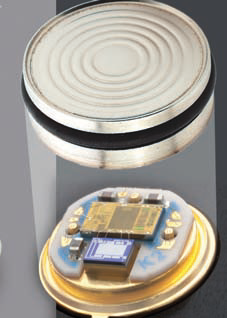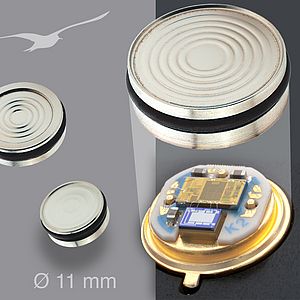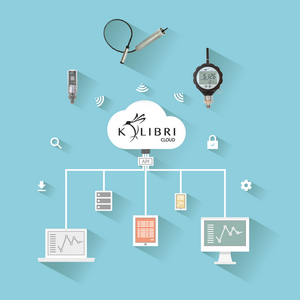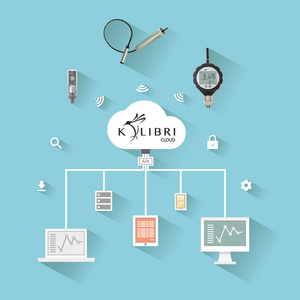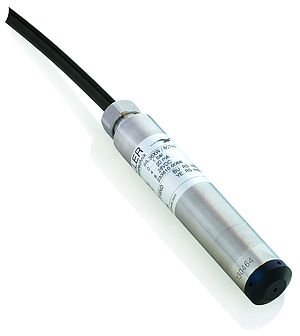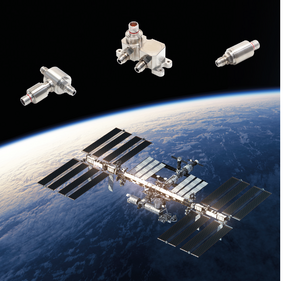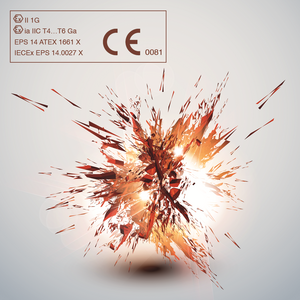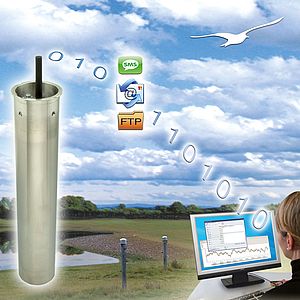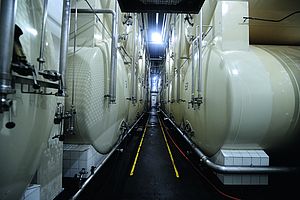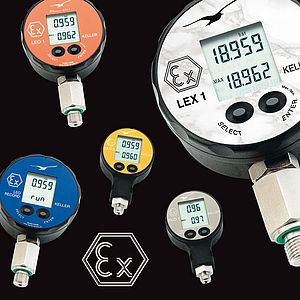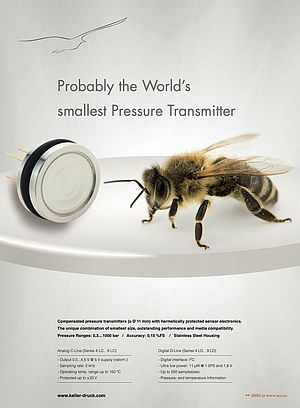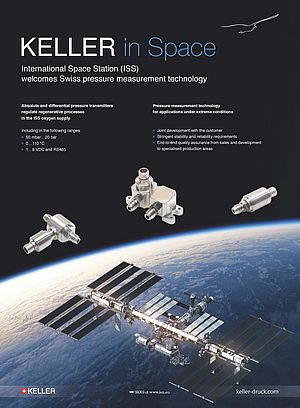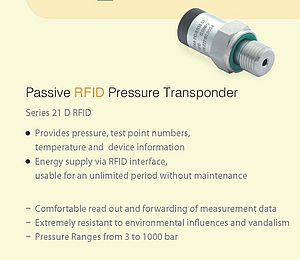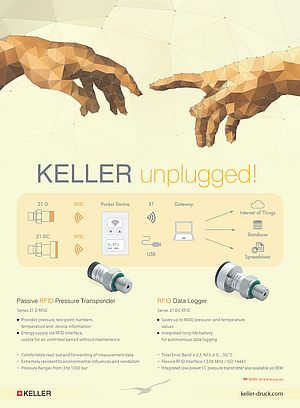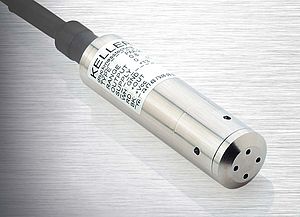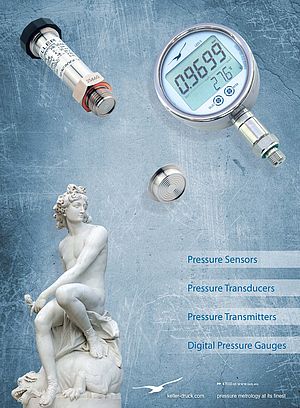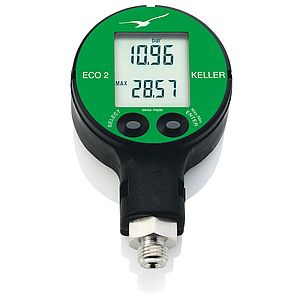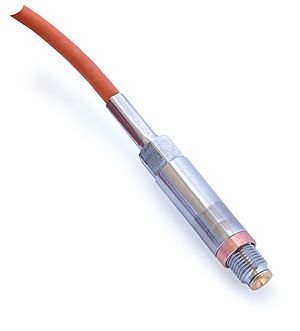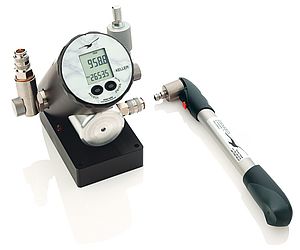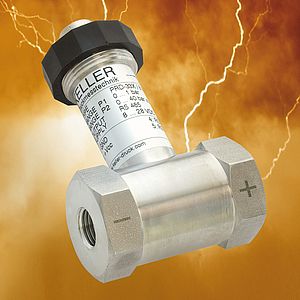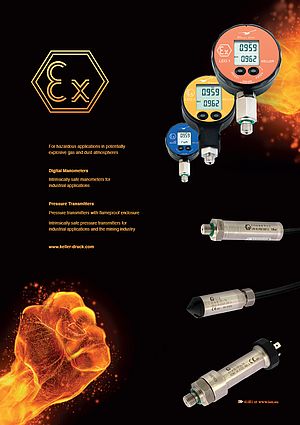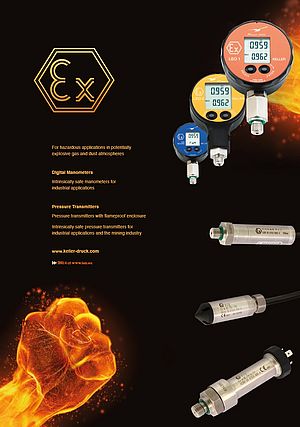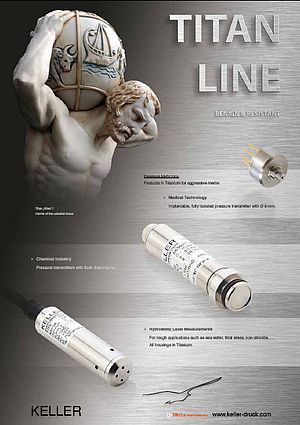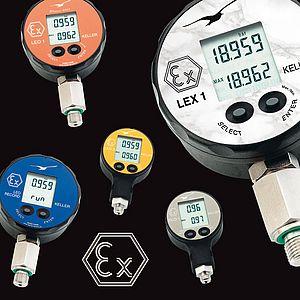In our Series 4 LC...9 LC pressure transmitters, thespecial ASIC for signal processing is fitted directlynext to the pressure sensor, in the same housing,under oil, and with the exclusion of air. This yieldsa host of advantages in terms of application: all thekey pressure measurement components are nowprotected against the risks from humidity and condensation.The interior wiring is implemented withshort, lightweight bonding wires, while sintered-inpressure-resistant glass leadthroughs feed the transmittersignals out. Together with the high-gradesteel housing, they form a Faraday cage around themeasuring system, acting as feedthrough capacitors.This makes the CiO technology absolutely RFIresistant up to field strengths of 250 V/m and forfrequencies of up to 4 GHz.
Series 4 LC...9 LC pressure transmitters offer twooutput signals: a ratiometric analog voltage outputand a digital inter-integrated circuit interface(I2C). The ratiometric signal eliminates the needfor an expensive voltage reference in the supportelectronics to the A/D converter, with noadditional effort and expense for compensationand calibration. For a voltage supply of 5,0 V,the output signal is specified as 0,5 ... 4,5 V. Thetransmitters provide constant protection againstovervoltage and polarity reversal on all lines upto ±33 VDC.
For years, the I2C interface has been regarded asthe serial standard in embedded systems. Up to128 OEM transmitters in Series 4 LC...9 LC canbe addressed successively by one I2C master inorder to call up the current pressure and temperaturevalues from the transmitters (slaves). With anI2C output, the pressure transmitters can operatewith a voltage supply of only 2,7...3,6 VDC, and they are ready to supply the current measured values 5 ms after switching on. Appropriate ON/OFF operation and low power consumption makethese transmitters ideally suited for mobile applications.
With an analog output, the transmitters can beused at temperatures of between -40 °C and+150 °C, and with an I2C output the range is from-40 °C to +80 °C. The full scale pressure rangesfor the analog version extend from 2 bar to 1'000bar, and for the digital version from 2 bar to 200bar. The internal sampling rate offers a very gooddynamic range of 2 kHz. Low power consumptionduring continuous operation is another benefit. Inthis regard, the digital version requires less than 3mA, and the analog version requires about 8 mA.


